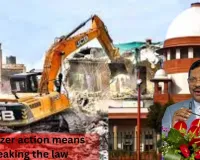Federation of Indian Pilots Urges Grounding of Air India’s Boeing 787 Fleet after Ahmedabad Crash
Digital Desk

The Federation of Indian Pilots (FIP) has called on the Ministry of Civil Aviation to immediately ground Air India’s Boeing 787 Dreamliner fleet following two major technical malfunctions reported within a single week.
In a letter to Civil Aviation Minister K. Rammohan Naidu, FIP President Captain C.S. Randhawa urged a comprehensive investigation into the Dreamliner’s electrical systems and requested the Directorate General of Civil Aviation (DGCA) to conduct a special safety audit of Air India’s operations.
Representing more than 5,000 pilots nationwide, the FIP said Air India’s Boeing 787s have shown “repeated technical issues, particularly after maintenance handled by newly inducted engineers.”
Two Boeing 787 Incidents in One Week
October 9 – Vienna–Delhi Flight Diverted to Dubai:
Air India flight AI154, operating from Vienna to Delhi, was diverted to Dubai after encountering a technical malfunction.
While all passengers were reported safe and the aircraft later cleared for re-departure, sources revealed that autopilot, ILS, flight directors, and flight control systems failed mid-air.
October 4 – Emergency Landing on Amritsar–Birmingham Route:
Just five days earlier, flight AI117 (Boeing 787-8) made an emergency landing at Birmingham Airport after its Ram Air Turbine (RAT) deployed unexpectedly during descent. Air India confirmed that no passengers or crew were injured.
FIP Renews Safety Concerns
The pilots’ federation reiterated that the “repeated snags and MEL (Minimum Equipment List) clearances” must be thoroughly investigated to safeguard passengers and crew.
FIP also linked its latest demand to the June 2025 Air India crash (flight AI171) from Ahmedabad to London Gatwick, which claimed 270 lives, including that of former Gujarat Chief Minister Vijay Rupani.
Since the Ahmedabad tragedy, the federation has repeatedly sought a fleet-wide inspection of Air India’s Dreamliners, citing “persistent electrical and maintenance-related failures” as a continuing threat to flight safety.

.jpg)
.jpg)
.jpg)


.jpg)




